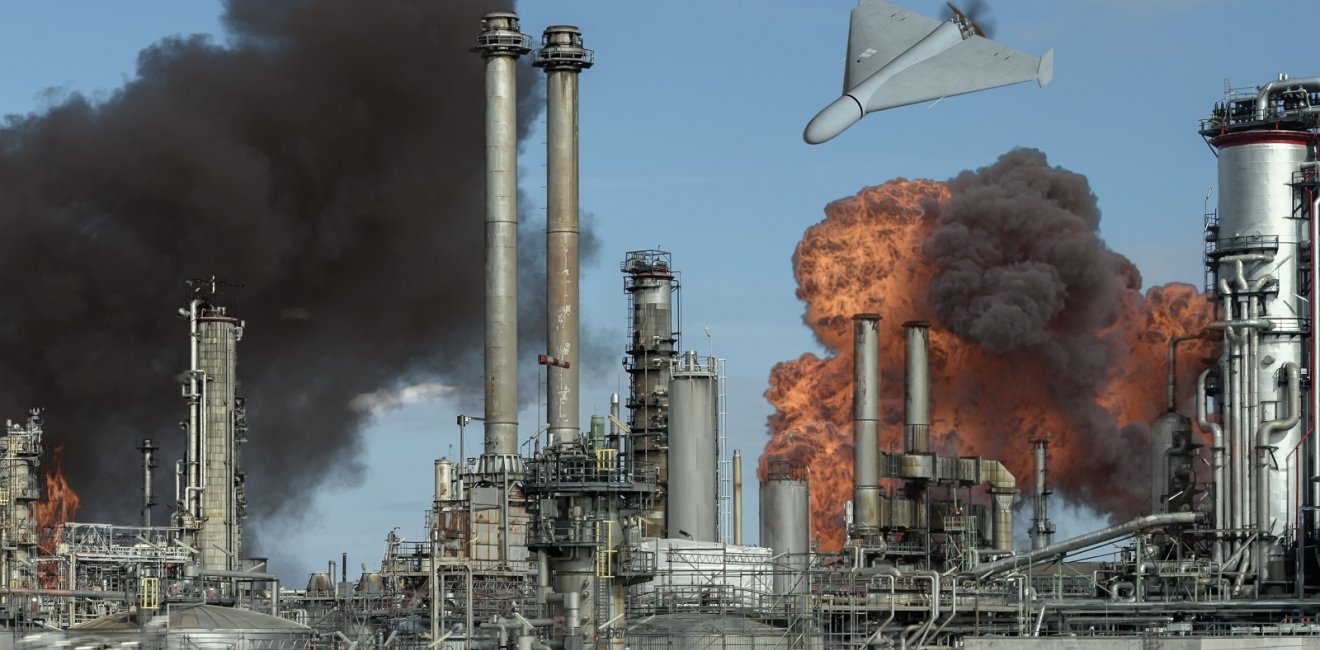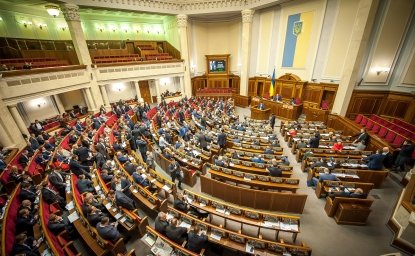
A blog of the Kennan Institute
On February 24, 2025, Ukraine will enter the third year of the large-scale war with Russia. Throughout this period, Ukraine’s energy system has been one of the main targets of Russian attacks. Despite this campaign, unprecedented in severity, scope, and duration, Ukraine continues to maintain a reliable supply of power, gas, and heating with only minor interruptions.
These attacks on Ukraine’s energy sector did not just begin with Russia’s 2022 full-scale invasion. Russia annexed Crimea in 2014 and simultaneously launched a sustained separatist war in Ukraine’s Donbas region in the East. Before the beginning of the war in 2014, Donbas was the key coal-producing region in Ukraine, and a significant portion of the country's electricity came from coal. The initial fighting damaged both coal production and transport, which resulted in rolling blackouts across the country during the winter of 2014-2015.
One year later, sporadic fighting continued in Donbas, but the energy sector stabilized somewhat. The relatively positive situation in the energy sector in 2015 concealed serious underlying issues, however. Ukraine’s energy assets were obsolete relics of the Soviet era. Compounding the situation, Ukraine’s energy policy had long suffered from populism and paternalism, exacerbating every stage of the industry from production to transmission to consumption. Then came the Russian strikes on energy facilities across the country starting in 2022. Ukrainians began truly suffering for the first time from frequent and long rolling blackouts and heating interruptions.
At the very beginning of its full-scale war, Russia avoided attacking Ukraine’s energy system. The Kremlin expected a swift and victorious campaign, so it would be illogical to destroy the infrastructure of the country they intended to control. They did strike at fuel depots and other fuel infrastructure as crucial assets for Ukraine’s military logistics.
But when Russia realized it was facing a prolonged campaign in Ukraine, widespread attacks on the energy system became a key part of Moscow’s strategy to conquer Ukraine. Looking back, this strategy has not yielded significant military success. However, the Kremlin has not abandoned the tactic—in fact, it is doubling down. (See this Focus Ukraine article from last year on major developments in Ukraine’s energy over ten years of war.)
Russian Energy Terror in 2024
The winter of 2023-2024 passed almost without serious damage to Ukraine’s energy supply: Existing capacities, together with imports, were just enough to cover electricity demand. However, this past year has brought an intensification of Russian assaults on Ukraine’s power system. Beginning on March 22, Russia resumed its campaign of large-scale missile and drone attacks on the power system nationwide, totaling 13 by the end of the year. To compare, Russia launched 11 such attacks in 2022 and 5 such attacks in 2023. In addition to these attacks, Russian forces launched numerous localized strikes across the front in 2024, targeting specific power plants as well as transmission and distribution substations, primarily in the frontline regions.
In the first half of 2024, Russian forces targeted all thermal and hydropower plants across the country, resulting in a temporary loss of 9 GW in power generation capacity (half of the typical peak demand in winter). Consequently, Ukraine endured prolonged blackouts during the summer. In the second half of 2024, power transmission facilities, including those responsible for electricity imports from Europe, were attacked. These strikes on transmission sites pose significant risks to the safe operation of three nuclear power plants (NPPs) in the controlled territories and a threat of nuclear accidents. Throughout the war, NPPs continue to produce half of Ukraine's electricity.
The situation at the Russian-occupied Zaporizhzhia NPP remains unchanged. It still does not receive adequate maintenance and it continues to serve as a Russian ammunition depot. As explosions dot the surrounding area, the Russians have intensified their efforts to link the Zaporizhzhia NPP to their power grid and restart operations. (See this Focus Ukraine article on the importance of stabilizing the situation at the Zaporizhzhia NPP.)
Russia also escalated its attacks against gas infrastructure in 2024. These attacks may have been intended to put pressure on Ukraine to continue transiting some Russian gas supply to Europe after the last remaining transmission contract expired at the end of 2024. Ukraine’s top officials repeatedly stated that Kyiv was ready to transit natural gas, provided the supply came from Central Asia, not Russia. (See this Focus Ukraine article about this episode).
Russia has adapted its tactics for attacking Ukraine’s energy infrastructure. In August 2025, it began using cluster munition missiles—missiles carrying cluster bombs—to attack the power system in Ukraine for the first time in August 2025. Strikes have become more concentrated, with a higher number of missiles targeting specific facilities in each attack. By the end of 2024, Russians set a record for drone usage, with its drones increasingly effective at weakening Ukraine’s air defenses. As a result, more power facilities have sustained greater damage.
How Ukraine Withstood the Onslaught
The Russians could have inflicted even more damage had they employed new tactics. However, by the end of 2024, Ukraine was better able to sustain its power system in the face of Russian attacks than ever before. First, Ukraine received additional air defense resources, improving protection—though still not enough to fully safeguard the country’s energy infrastructure. Second, newly built concrete structures have proven effective in shielding power transmission substations from attacks. But there’s another key factor in Ukraine’s grid resilience.
At the beginning of the war, Ukraine relied on outdated production and transmission facilities. After three years of conflict, Ukrainian energy companies have been forced to replace much of this aging infrastructure with newer, more resilient capacity. For example, in the first half of 2024, Ukrainian energy companies repaired enough damaged facilities—including approximately 4 GW of thermal and hydropower plants—to prevent long-lasting, large-scale rolling blackouts. In addition, approximately 1 GW of gas-fired and solar power capacity has been installed, including off-grid facilities dedicated to single users. A significant portion of Ukraine’s damaged capacity has now been supplemented with imported electricity. Beginning in December, the EU increased the allowable electricity import capacity by permit from 1.7 to 2.1 GW. Mild winter temperatures throughout all three years of the war, compared to previous years, have also played a crucial role in reducing power demand, helping to prevent energy deficits and outages.
Ukraine’s new gas-fired power plants have driven up gas consumption, but Ukraine’s domestic gas production has also increased by 2.2 percent. While private production has declined, subsidiaries of the state-owned Naftogaz have increased production, leading to overall national gas production growth for the second consecutive year despite the ongoing conflict.
However, many problems remain. Damaged infrastructure and increased reliance on imports have driven electricity prices higher. In 2024, prices for industrial customers rose by one-third, while household rates surged by 63 percent. Energy markets are burdened by debt and underpayments, severely limiting the ability of energy companies to maintain and repair existing infrastructure while also expanding power generation with more modern and efficient facilities.
Despite concerns in Ukraine and the West, and contrary to Russia’s expectations, Ukraine’s energy sector is still standing strong after three years of war and continuous military strikes. Ukraine has responded to damage and destruction with rapid repairs, upgrades, and the construction of new facilities. From the very first day Russia launched its full-scale invasion, Ukraine has accelerated its integration into the European energy market and implemented key reforms. Rather than being Ukraine’s Achilles’ heel, the energy sector has, after three years of war, proven to be a vital line of its defense.
The opinions expressed in this article are those solely of the author and do not reflect the views of the Kennan Institute.
Author

Director, Energy Program, Ukrainian Institute for the Future

Kennan Institute
The Kennan Institute is the premier US center for advanced research on Eurasia and the oldest and largest regional program at the Woodrow Wilson International Center for Scholars. The Kennan Institute is committed to improving American understanding of Russia, Ukraine, Central Asia, the South Caucasus, and the surrounding region through research and exchange. Read more

Explore More in Focus Ukraine
Browse Focus Ukraine
Talking to the Dead to Heal the Living

Ukrainian Issue in Polish Elections


